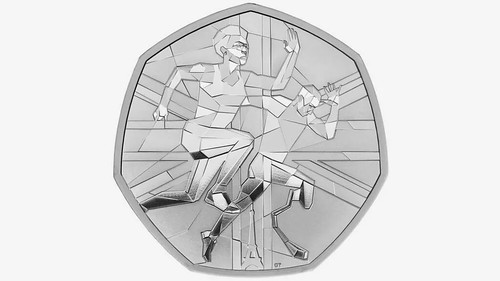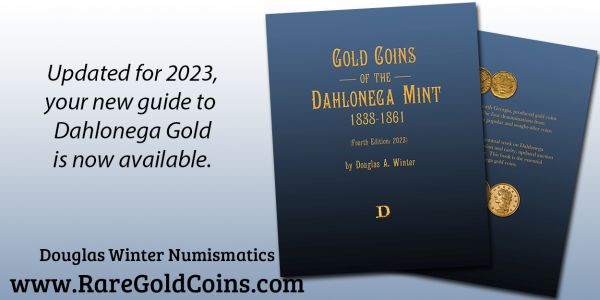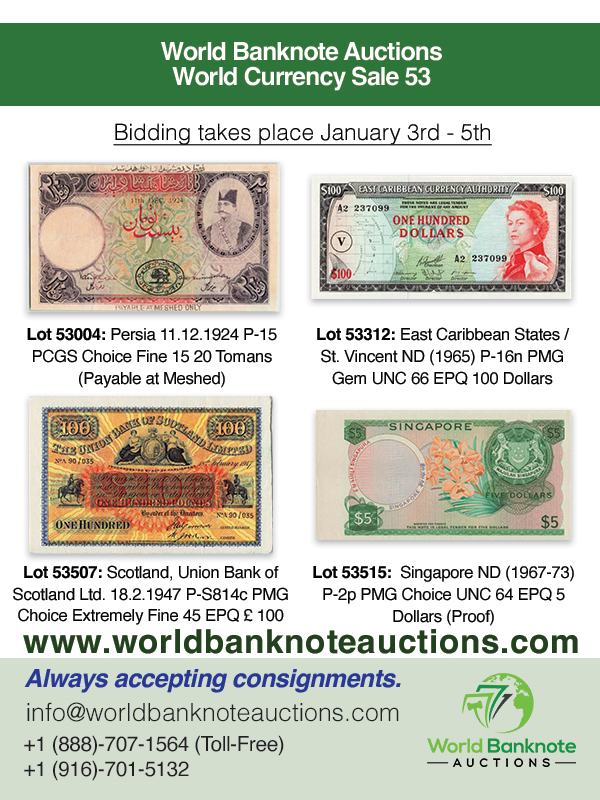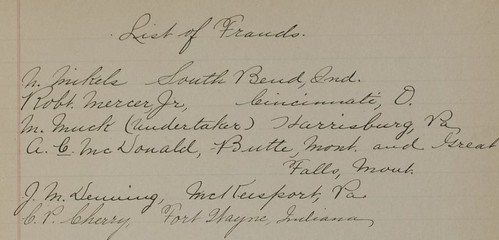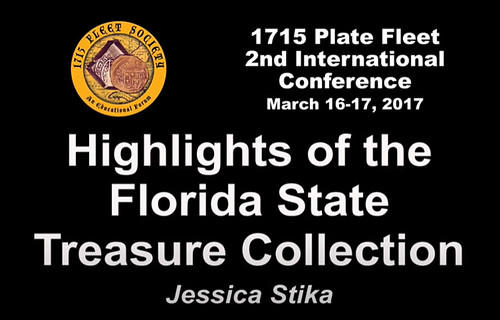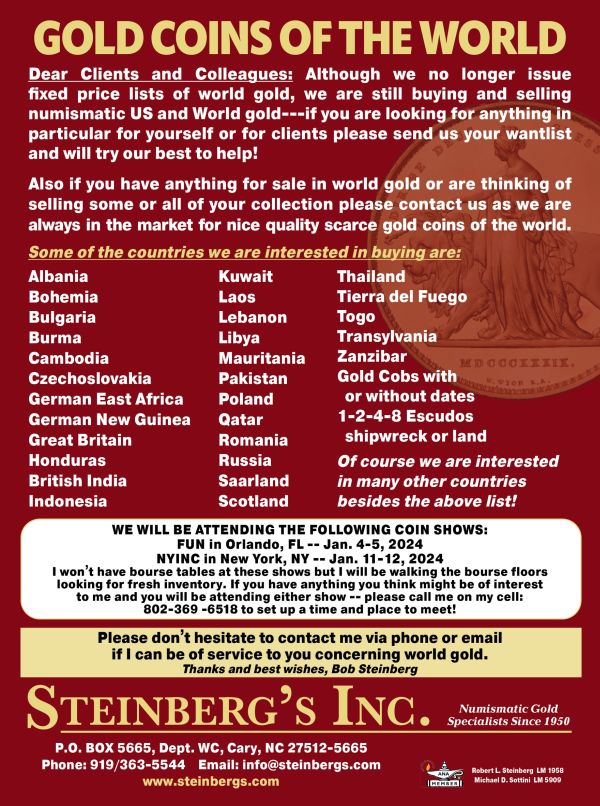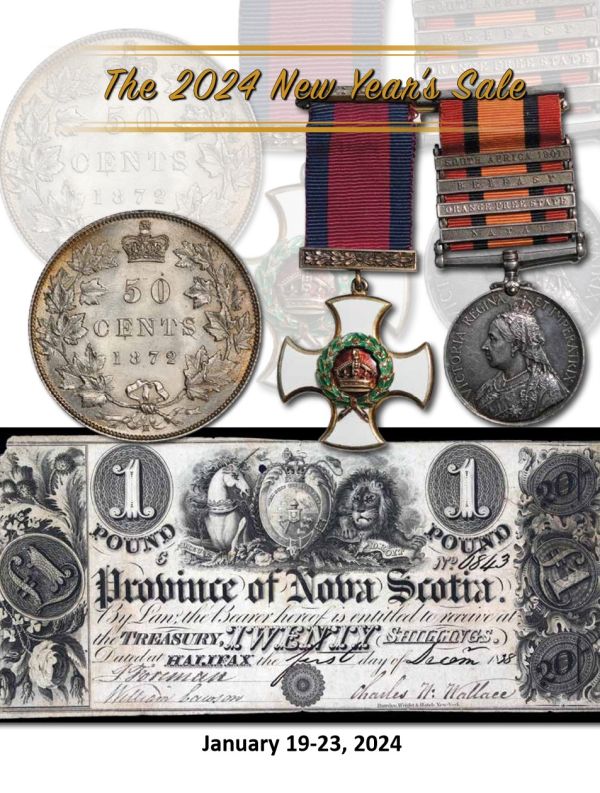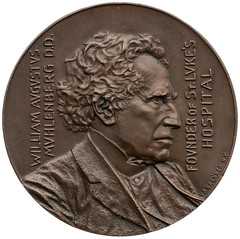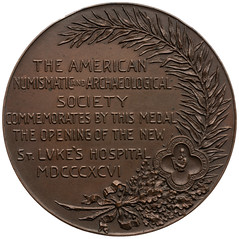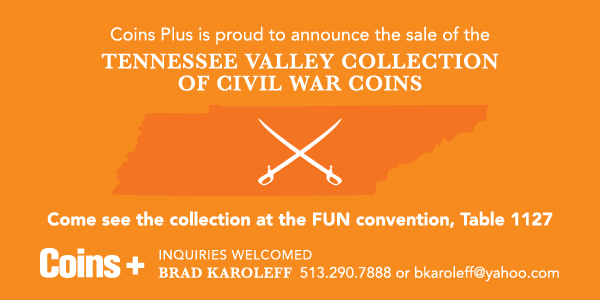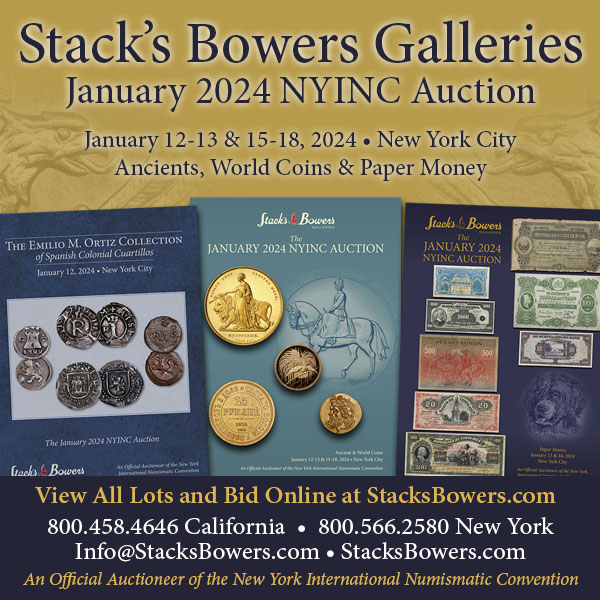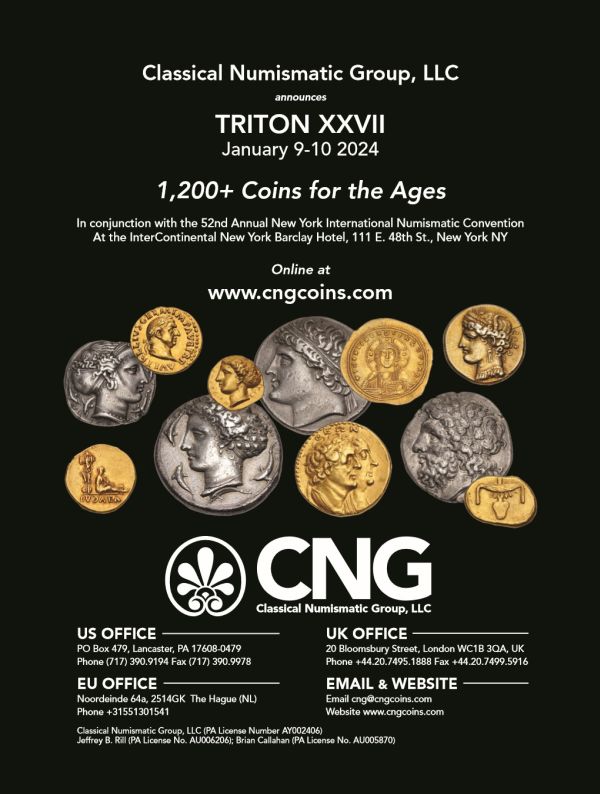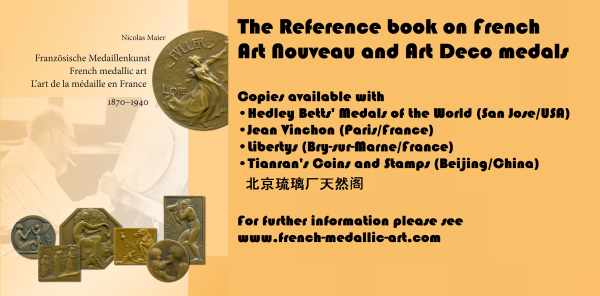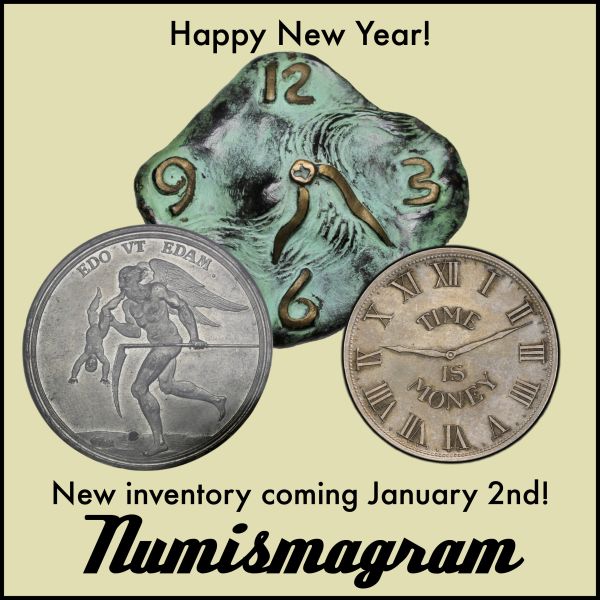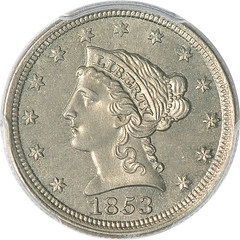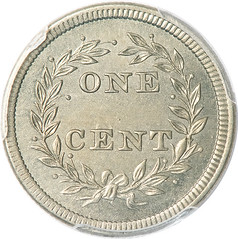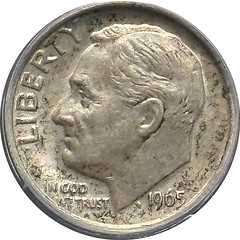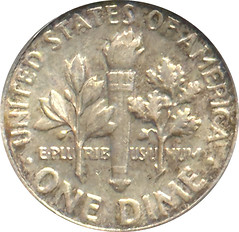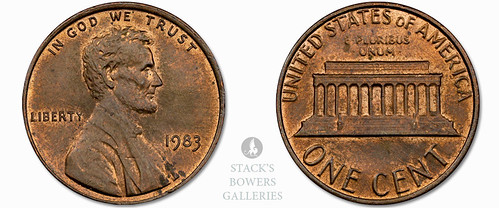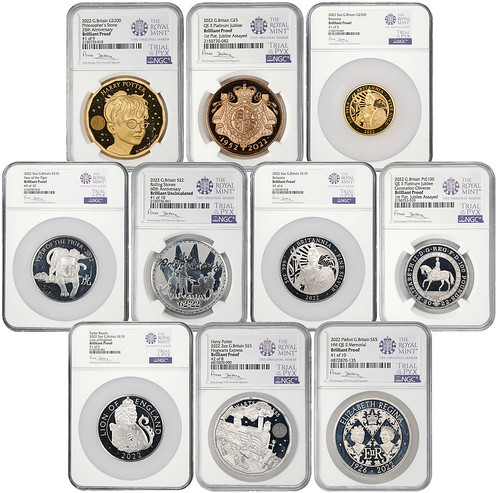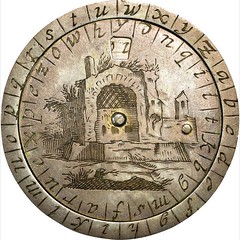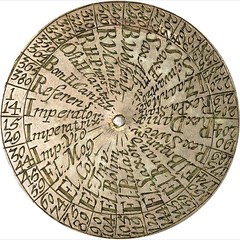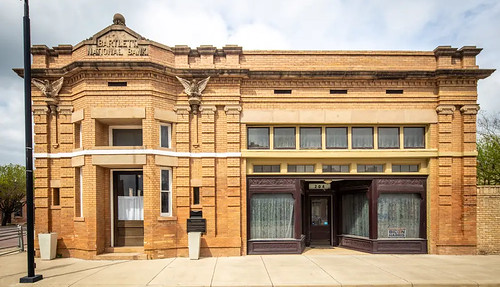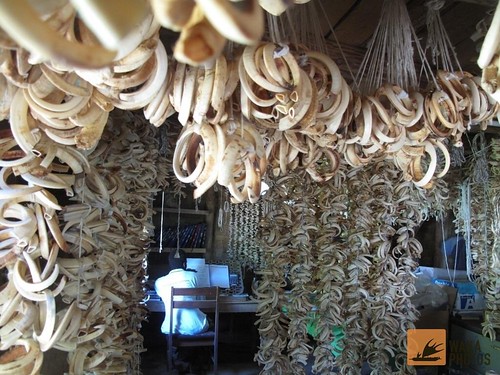
Visit our NBS Sponsors




About UsThe Numismatic Bibliomania Society is a non-profit association devoted to the study and enjoyment of numismatic literature. For more information please see our web site at coinbooks.org SubscriptionsThose wishing to become new E-Sylum subscribers (or wishing to Unsubscribe) can go to the following web page link MembershipThere is a membership application available on the web site Membership Application To join, print the application and return it with your check to the address printed on the application. Print/Digital membership is $40 to addresses in the U.S., and $60 elsewhere. A digital-only membership is available for $25. For those without web access, write to: Jeff Dickerson, Treasurer AsylumFor Asylum mailing address changes and other membership questions, contact Jeff at this email address: treasurer@coinbooks.org SubmissionsTo submit items for publication in The E-Sylum, write to the Editor at this address: whomren@gmail.com BUY THE BOOK BEFORE THE COINSale Calendar |
- WAYNE'S WORDS: THE E-SYLUM DECEMBER 31, 2023
- NEW BOOK: AMERICA’S PAPER MONEY
- JOHN B. LOVE (1936-2023)
- JOHN P. BURNHAM (1940-2023)
- NNP ADDS SMITH’S NUMISMATIC ROGUES GALLERY
- VIDEO: FLORIDA STATE TREASURE COLLECTION
- MORE ON BOY BISHOPS' CHURCH TOKENS
- REV. MUHLENBERG AND HIS MEDAL
- MORE ON JENNY LIND AND TAYLOR SWIFT
- NOTES FROM E-SYLUM READERS: DECEMBER 31, 2023
- REVIEW: BANK OF CANADA MUSEUM
- VOCABULARY TERMS: OVERSTRIKE, OVERSTRUCK
- JOHN PAUL BUTLER (1920-1982)
- NUMISMATIC RESEARCH REQUESTS SOUGHT
- TOM CALDWELL INTERVIEW, PART ONE
- WORLD BANKNOTE AUCTIONS: 2023 REVIEW
- NUMISMATIC NUGGETS: DECEMBER 31, 2023
- DATES ON ANCIENT COINS
- 1965 SILVER ROOSEVELT DIME FIND
- 1983 COPPER LINCOLN CENT
- STACK’S BOWERS OFFERS TRIAL OF THE PYX COINS
- 2024 ROYAL MINT COMMEMORATIVE COINS
- 18TH CENTURY GERMAN CYPHER WHEEL
- SOUTHERN STATES BANKNOTE ALBUM
- BARTLETT, TEXAS BANK RENOVATION
- PUZZLE PURISTS DECAMP TO A CASTLE
- LOOSE CHANGE: DECEMBER 31, 2023
- THE TANGBUNIA BANK OF VANUATU
Content presented in The E-Sylum is not necessarily researched or independently fact-checked, and views expressed do not necessarily represent those of the Numismatic Bibliomania Society.
WAYNE'S WORDS: THE E-SYLUM DECEMBER 31, 2023
 Thank you for reading The E-Sylum. If you enjoy it, please send me the email addresses of friends you think may enjoy it as well and I'll send them a subscription. Contact me at whomren@gmail.com anytime regarding your subscription, or questions, comments or suggestions about our content.
Thank you for reading The E-Sylum. If you enjoy it, please send me the email addresses of friends you think may enjoy it as well and I'll send them a subscription. Contact me at whomren@gmail.com anytime regarding your subscription, or questions, comments or suggestions about our content.
As noted earlier, this issue may arrive late because of the holiday. Happy New Year!
This week we open with two new books, two obituaries, updates from the Newman Numismatic Portal, notes from readers, and more.
Other topics this week include Numismatic Rogues, Boy Bishops, Rev. William Augustus Muhlenberg, Jenny Lind, the Bank of Canada Museum, dates on ancient coins, off-metal errors, the Trial of the Pyx, a bank building renovation, and the Tangbunia Bank of Vanuatu.
To learn more about America’s paper money, the Florida State Treasure Collection, commemorative banknotes, tactile coin exhibits, the Ralph Foster Museum, Tom Caldwell of Northeast Numismatics, the rarity found in a Coinstar machine, the World’s Richest Poor Man, and the World's Weirdest Bank, read on. Have a great week, everyone!
Wayne Homren
Editor, The E-Sylum
NEW BOOK: AMERICA’S PAPER MONEY
The Smithsonian Institution Scholarly Press has published a free 384-page electronic book by William L. Pressly called America’s Paper Money: A Canvas for an Emerging Nation. Check it out - it's an important new look at the intersection of numismatics and art history.
Found via News & Notes from the Society of Paper Money Collectors (Volume IX, Number 28, December 26, 2023) -Editor
America’s Paper Money: A Canvas for an Emerging Nation
William L. Pressly
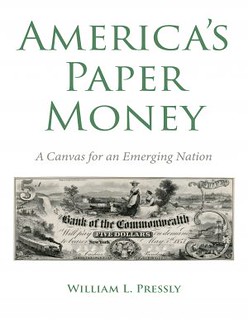 The Massachusetts Bay Colony in 1690 became the first government in the Western world to print paper money, the imagery for which initiated an indigenous American art form of remarkable dynamism and originality. After the Revolutionary War, disillusioned by how quickly its promiscuous printing of Continental currency had led to hyperinflation, the U.S. government left it to private institutions such as state-chartered banks to carry on this artistic American tradition. Adorned with a vast variety of images, bank notes soon became the fledgling country’s primary currency. With pressures of the Civil War, the federal government in 1861 began taking charge of the paper-money supply by creating a national currency; simultaneously, the Confederate States of America was creating a competing self-image, making heavy use of bank-note vignettes. Later, collaboration between government engravers and well-known artists on the 1896 Silver Certificates marked the apex of U.S. government currency design. For two centuries, American creativity and technical ingenuity resulted in imagery on paper money that helped create and enhance the nation’s imagined self.
The Massachusetts Bay Colony in 1690 became the first government in the Western world to print paper money, the imagery for which initiated an indigenous American art form of remarkable dynamism and originality. After the Revolutionary War, disillusioned by how quickly its promiscuous printing of Continental currency had led to hyperinflation, the U.S. government left it to private institutions such as state-chartered banks to carry on this artistic American tradition. Adorned with a vast variety of images, bank notes soon became the fledgling country’s primary currency. With pressures of the Civil War, the federal government in 1861 began taking charge of the paper-money supply by creating a national currency; simultaneously, the Confederate States of America was creating a competing self-image, making heavy use of bank-note vignettes. Later, collaboration between government engravers and well-known artists on the 1896 Silver Certificates marked the apex of U.S. government currency design. For two centuries, American creativity and technical ingenuity resulted in imagery on paper money that helped create and enhance the nation’s imagined self.
Publication Date: December 20, 2023
Availability: Electronically
JOHN B. LOVE (1936-2023)
Silver dollar specialist John B. Love passed away on December 19th. He was born June 6, 1936. -Editor
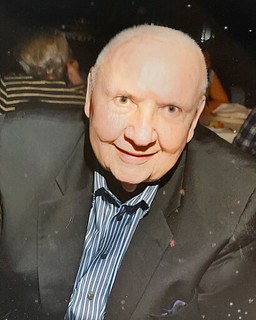 John Bracy Love, nationally known numismatist, went to meet his Lord on December 19, 2023. He was at his home in Whitefish, Montana surrounded by all his loved ones. In his last years, John was blind and had many health problems, but he stayed positive and strong, seldom complaining unless you interrupted his Grizzly game.
John Bracy Love, nationally known numismatist, went to meet his Lord on December 19, 2023. He was at his home in Whitefish, Montana surrounded by all his loved ones. In his last years, John was blind and had many health problems, but he stayed positive and strong, seldom complaining unless you interrupted his Grizzly game.
John was born to Virgil and Florence Bracy Love on June 6, 1936, in Carbondale, Illinois. As a small child the family moved to Burbank, California where Virgil went to work for Columbia movie studios. John graduated from John Burroughs High School in Burbank, and then went to Los Angeles Valley Junior College on a football scholarship. His team was successful, and they went on to win the championship for their football league in 1955. After graduating, John was offered a football scholarship to the University of Montana. While at the U of M, John met his wife of 63 years, Karla Kay Kluth. The couple were married in 1960. Shortly after they married, they moved to Cut Bank, MT where John managed the Orpheum Theater Company for his mother-in-law. They lived in Cut Bank for over 50 years and raised their daughter, Lisette Lee Love, and son, John Byron Love, there.
JOHN P. BURNHAM (1940-2023)
George Cuhaj and Tony Terranova alerted me to the passing of John P. Burnham on December 16th. -Editor
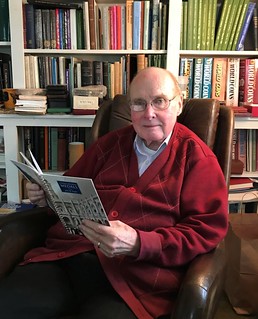 Born to George R. Burnham and Kaarin (Maki) Burnham, John began his life of uncommon learning and accomplishment on July 20, 1940 in Portland, Oregon. There, with his beloved parents and sister Kaarin (Burnham) Cargill, John spent near every weekend of his childhood exploring the Columbia River Gorge and the numerous parks along the old highway - picnicking at Wahkeena Falls, tromping through the forest, intrepidly leading adventures up Oneonta Gorge, a lifelong favorite. Innumerable family road trips to Wecoma Beach and San Francisco further fueled the travel and exploration bugs. Those formative years were also the beginning of John’s lifelong passions for trains and for coins and collecting (his first coin, a gift from his mother, a 1912 Liberty Head dime from the Denver Mint).
Born to George R. Burnham and Kaarin (Maki) Burnham, John began his life of uncommon learning and accomplishment on July 20, 1940 in Portland, Oregon. There, with his beloved parents and sister Kaarin (Burnham) Cargill, John spent near every weekend of his childhood exploring the Columbia River Gorge and the numerous parks along the old highway - picnicking at Wahkeena Falls, tromping through the forest, intrepidly leading adventures up Oneonta Gorge, a lifelong favorite. Innumerable family road trips to Wecoma Beach and San Francisco further fueled the travel and exploration bugs. Those formative years were also the beginning of John’s lifelong passions for trains and for coins and collecting (his first coin, a gift from his mother, a 1912 Liberty Head dime from the Denver Mint).
After graduating, as valedictorian, from Jefferson High in 1958, John attended the University of Oregon where he starred for the University’s College Bowl team before graduating Phi Beta Kappa. John then left his beloved Oregon to attend graduate school at Yale University in New Haven, Connecticut. Connecticut would become his home for the ensuing six decades. After earning his degree (in part paid for by his winnings playing Gin) John joined the faculty at Connecticut College as a professor of economics. At Connecticut College, he met Christina, the love of his life. The couple married in 1967 and would raise four sons together, primarily in their book-filled (oh so very, very book-filled!) and historic home in Old Saybrook.
THE BOOK BAZARRE
NNP ADDS SMITH’S NUMISMATIC ROGUES GALLERY
The latest addition to the Newman Numismatic Portal is Pete Smith’s Numismatic Rogues Gallery. Project Coordinator Len Augsburger provided the following report. -Editor
Pete Smith’s Numismatic Rogues Gallery Added to NNP
The commercial side of numismatics has a way of attracting ne’er-do-wells, and to be sure academic and museum collections are no less susceptible. Pete Smith’s latest work shines a spotlight on 275 perpetrators of numismatic crimes, compiling the pertinent data in a single reference. In earlier days, dealers published their own lists of individuals not to be trusted, but the explosion of public information in the Internet age allows for a more systematic approach.
Readers are encouraged to contribute suggestions and additions.
VIDEO: FLORIDA STATE TREASURE COLLECTION
The David Lisot Video Library on the Newman Numismatic Portal can be found at:
https://nnp.wustl.edu/library/multimediadetail/522852
We highlight one of his videos each week in The E-Sylum. Here's one from the 1715 Fleet Society Conference in 2017 about the Florida State Treasure Collection. -Editor
MORE ON BOY BISHOPS' CHURCH TOKENS
David Powell kindly provided this information on the medieval Boy Bishops and their Christmas tokens. Thank you! -Editor
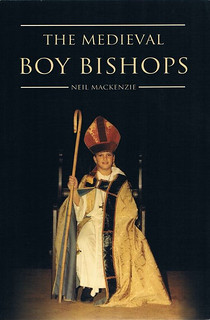 There is an excellent paperback on the history of the Boy Bishop tradition in the form of Neil MacKenzie’s “The Medieval Boy Bishops”.
There is an excellent paperback on the history of the Boy Bishop tradition in the form of Neil MacKenzie’s “The Medieval Boy Bishops”.
I have written a couple of pages on the subject in my lead token newsletter at LTT_128, pages 2-3 {see https://thetokensociety.org.uk/ltt/ }, and there are various examples illustrated elsewhere throughout the Leaden Tokens Telegraph {see specifically the display on the back page of LTT_88}, but Gary Oddie knows a lot more about the things than I do.
REV. MUHLENBERG AND HIS MEDAL
Author Jim Haas submitted these notes on Rev. William Augustus Muhlenberg and the medal Victor David Brenner designed featuring him. Thanks! -Editor
My current project of editing a book penned by an artist friend is coming to an end, and my hope is to begin writing another book. The subject will be either a comprehensive history of College Point, NY or how the community experienced WWII. Both are near and dear.
With regard to the former, yesterday I chanced upon two versions of an article about a new medal that was published in the New York Times and The Sun in 1896. The person for whom the medal was struck, Rev. William Augustus Muhlenberg, also gave College Point its name. Here’s the story.
MORE ON JENNY LIND AND TAYLOR SWIFT
Roland Rollins writes:
"One cannot forget the Swedish 50 Kroner banknote produced from 1996-2003. I started both of my kids collecting world banknotes three decades ago. The bug stuck with my son, who collects all countries "dead" or current. My daughter collects only banknotes related to music, so the note below resides in her collection. There is more than just her image:
"Front: Musical notes from Vincenzo Bellini's opera "Norma, singer Jenny Lind, roses, Carl Fredrik Adelcranz's drawing of Stockholm's old opera house, microprinted quote from composer Arnold Schoenberg.
"Back: Silver harp and it's tonal range, excerpt from the score "Pictures of Percussion and Orchestra" .
"The watermark is also a Jenny Lind pattern."
NOTES FROM E-SYLUM READERS: DECEMBER 31, 2023
More on Rex Stark
Donald Ackerman writes:
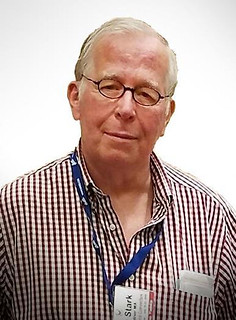 "When you reach a certain age, friends and colleagues start dying off which can be rather depressing but, as they, say, it beats the alternative!
"When you reach a certain age, friends and colleagues start dying off which can be rather depressing but, as they, say, it beats the alternative!
"I first met Rex around 1976. While at a show, he showed me a bunch of snapshots of items in his collection.
"In remembering Rex, I can’t think of a single bad thing to say about him. He was truly a straight shooter who treated everyone with respect and courtesy. He did have a rather sardonic, dry sense of humor which shone through on occasions.
"He was entrusted with the sale of Richard Ulbrich’s Indian Peace Medals and George Washington Inaugural Buttons, having established a trusted position with the family.
"Buying and selling collectibles was Rex’s life blood. He loved the action of setting up at shows and bidding at auctions. Not too many items escaped his radar. After receiving his cancer diagnosis, Rex could have opted to spend his last days traveling and checking off items on his bucket list. But, he didn’t have a bucket list. He did not change his routine. Some years back, Rex bought Patti a house in Tasmania and she implored him to move to Australia, but he would have none of it (he didn’t want to cross paths with 12” Huntsman spiders or other poisonous denizens of the outback). Outside of yearly trips to London for the Ceramic Fair, he stayed in New England, convenient to Brimfield and Antiques Week in New Hampshire, as well as other hobby events. He wasn’t consumed by his illness (at least not emotionally or intellectually). He did what he loved best until the very end."
Thanks. Might as well go out with one's boots on! -Editor
To read the earlier E-Sylum article, see:
REXFORD ADDISON STARK (1947-2023)
(https://www.coinbooks.org/v26/esylum_v26n52a06.html)
Other topics this week include Michael Kirzner, Morgan Bulkeley, and coin encapsulation and weights. -Editor
REVIEW: BANK OF CANADA MUSEUM
Tom Babinszki publishes the Blind Coin Collector blog. In July he spoke about tactile coin exhibits at a conference, and this month he followed up with a review of accessible coin exhibits at the Bank of Canada Museum. With permission, we're republishing his two posts here. -Editor
Tactile coin exhibits
 Last month I attended the Leadership Exchange in Disability and the Arts conference in Boston. I was very interested in the conference, so when I decided to attend, I thought it would be great to contribute something interesting. Given that not too many accessible and tactile coin exhibits exist, I submitted a short proposal about how to make coin exhibits accessible for blind people.
Last month I attended the Leadership Exchange in Disability and the Arts conference in Boston. I was very interested in the conference, so when I decided to attend, I thought it would be great to contribute something interesting. Given that not too many accessible and tactile coin exhibits exist, I submitted a short proposal about how to make coin exhibits accessible for blind people.
It was accepted. I didn’t think much of it at the time, I thought it would be an interesting concept, but let’s face it, coin collecting is not a common hobby among blind people. Thus, coin museums are generally as inaccessible as could be for anybody who needs a tactile experience. Here I am always quick to mention that not without exception, and though not many blind people visit coin museums, whenever I asked for a guided tour, most museums put a fantastic program together for me.
VOCABULARY TERMS: OVERSTRIKE, OVERSTRUCK
Here's another entry from Dick Johnson's Encyclopedia of Coin and Medal Terminology. -Editor
Overstrike, Overstruck. A coin or medal struck on an already existing coin or medal (the existing piece is used for a planchet instead of a blank planchet). A flattened outline of the features of the first, called the undertype, will often be seen beneath the second, called the overtype. Overstrikes lack the sharp image of a piece struck on an ordinary blank with a uniformly smooth surface which normally fills all die cavities. An overstrike may fill some cavities and not others leaving an imperfectly struck piece.
JOHN PAUL BUTLER (1920-1982)
E-Sylum Feature Writer and American Numismatic Biographies author Pete Smith submitted this article on collector John Paul Butler and his exhibits at the Ralph Foster Museum at the College of the Ozarks. Thanks! -Editor
I was not aware of this money museum until I started doing the research a couple of weeks back. This shows how a man of modest means can assemble a coin collection worthy of display in a museum.
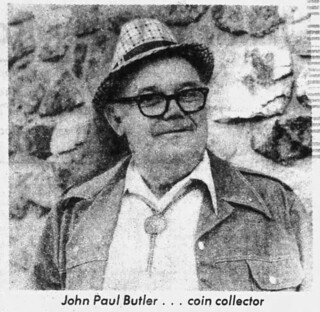 Butler was born on a farm near Alamo, Tennessee, on June 4, 1920, the son of John T. Butler
(1894-1923) and Hazel Permenter Butler (1901-1924). He married Bonnie Davis Butler (1931-2010) and had two daughters, Rosemary and Paulette.
Butler was born on a farm near Alamo, Tennessee, on June 4, 1920, the son of John T. Butler
(1894-1923) and Hazel Permenter Butler (1901-1924). He married Bonnie Davis Butler (1931-2010) and had two daughters, Rosemary and Paulette.
He attended Lambuth College in Jackson, Tennessee in 1939. His education was interrupted by his January 11, 1941, enlistment in the Army Air Corps during World War II. His enlistment papers show his civilian occupation as actor. After the war he attended the University of California and graduated from Pacific University. He remained in the service as an Air Force recruiter stationed at Jackson, Tennessee.
His great-grandmother gave him a purse with five old coins when he was two years old. He began collecting coins seriously while stationed with the 15th Air Force in England during 1942. He was in a hospital recovering from an airplane crash and was visited by a British Air Force major who gave him some duplicates. He was transferred to Africa and continued to collect there. By the end of the war in 1945 he had accumulated more than 6,000 different coins.
NUMISMATIC RESEARCH REQUESTS SOUGHT
Pete Smith submitted this request for new research topics. What's on your mind? -Editor
"For the past couple of years, I have tried to contribute an article to The E-Sylum each week. Some are responses to other E-Sylum items and some are just stories I find interesting. Now I am open to suggestions and requests from readers.
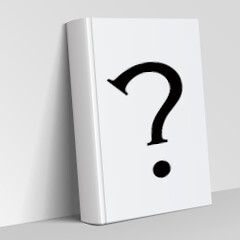 My research is limited to items in my library and sources available on the internet. If you have
already searched everywhere, don’t expect me to find something you can’t find. If you come
across an interesting story, perhaps I can help to tell it.
My research is limited to items in my library and sources available on the internet. If you have
already searched everywhere, don’t expect me to find something you can’t find. If you come
across an interesting story, perhaps I can help to tell it.
For the past six months I have been obsessed with numismatic crimes. I could relate a new crime story every week. I am looking for suggestions for my Numismatic Rogues Gallery listing.
Send your requests through Wayne and The E-Sylum. He will pass them on to me."
TOM CALDWELL INTERVIEW, PART ONE
Greg Bennick's latest interview for the Newman Numismatic Portal is with Tom Caldwell of Northeast Numismatics. Here's the first of four parts, where Tom discusses his start in the business. -Editor
GREG BENNICK: Hi, everybody. My name is Greg Bennick with the Newman Numismatic Portal. I'm in the midst of doing a series of interviews with prominent numismatists and thank you for being here today to watch this. I'm with Tom Caldwell today from Northeast Numismatics, and Tom and I are going to be discussing his [business]. We're going to be discussing his history. We're going to be discussing coins. We're going to be discussing all sorts of things from his career. Tom, I'm really glad you're able to join me today. Thanks so much.
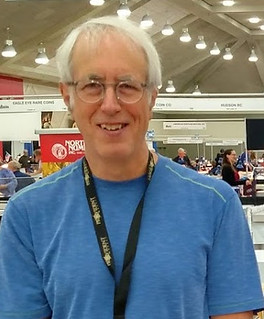 TOM CALDWELL: Thanks for having me. I appreciate it.
TOM CALDWELL: Thanks for having me. I appreciate it.
GREG BENNICK: Great. Well, let's get started with the basics. Tell me about your start in coins. How did you get your start in the hobby and when?
TOM CALDWELL: Okay. Well, it's kind of a corny story, but basically, I was in junior high, and my mother gave me milk money, as she did every day for school, and a friend, Chris Brannigan, who I haven't seen in over 50 years, said, Tom, you should check this coin out here. It was an 1867 Shield nickel. I don't remember if it was rays or without rays, and no, I don't still have that coin, but I checked it out. At the time, it was worth about $20. And you could say the rest is history. I've been doing it ever since. I've always been into coins.
GREG BENNICK: So did that coin come from the change that your mom gave you for milk money?
TOM CALDWELL: Yes, it did.
WORLD BANKNOTE AUCTIONS: 2023 REVIEW
World Banknote Auctions President Dennis Hengeveld published this year-end review in a note to customers this week. -Editor
 With 2023 coming to an end it is time for a brief look back on the past year and more importantly, a look forward to 2024 and beyond. Here at World Banknote Auctions we look back on a fantastic year, with tens of thousands of different lots offered in our auctions, and an overall sell-through rate of well in excess of 90% and many record-setting sales. We expanded more into US Currency and were able to offer a number of fantastic collections, including parts 1 and 2 of the Navy Commander Collection of National Banknotes and the Louisiana Bayou Collection of High Denomination notes. On the world side we offered the Isabella Chang Fong and Ian Marshall Collection of Jamaica, the catalog of which will no doubt become an important reference work on the banknotes of that country.
With 2023 coming to an end it is time for a brief look back on the past year and more importantly, a look forward to 2024 and beyond. Here at World Banknote Auctions we look back on a fantastic year, with tens of thousands of different lots offered in our auctions, and an overall sell-through rate of well in excess of 90% and many record-setting sales. We expanded more into US Currency and were able to offer a number of fantastic collections, including parts 1 and 2 of the Navy Commander Collection of National Banknotes and the Louisiana Bayou Collection of High Denomination notes. On the world side we offered the Isabella Chang Fong and Ian Marshall Collection of Jamaica, the catalog of which will no doubt become an important reference work on the banknotes of that country.
NUMISMATIC NUGGETS: DECEMBER 31, 2023
Here's a selection of interesting or unusual items I came across in the marketplace this week. Tell us what you think of some of these. -Editor
1853 J-151 Cent Pattern
Scarce R.6 pattern, only 32-40 minted. Very attractive, undergraded example has nice eye appeal and claims to higher grade. Trades from 3-5k. CU = 4750. Only four finer. If you like scarcity and a cool design you will love this one. Net Priced. 7226 (FP) $4500
Odd-looking spacing and lettering on the reverse. Glad this one didn't make it past the pattern stage. Nice coin regardless. From the Harry Laibstain Rare Coins site. -Editor
To read the complete lot description, see:
1853 1C J-151 *** PCGS PR64
(http://hlrc.com/Inventory/CoinViewer?id=871246003&c=23)
Other topics this week include Jewish-American Hall of Fame Medals, and a British North Borneo Company One Dollar note. -Editor
DATES ON ANCIENT COINS
Mike Markowitz published a nice CoinWeek article about dates on ancient coins. Here's an excerpt - see the complete article online. -Editor
DATES ARE SO universal on modern coins that it may come as a shock to learn that most ancient coins provide no indication of when they were minted. The “Common Era” (or “AD”, Anno Domini) dating system used in our world to designate years did not come into general use on European coins until the 16th century. A wide variety of dating systems were used by different cultures in the ancient world to keep track of years, and in some cases, these appear on coins.
1965 SILVER ROOSEVELT DIME FIND
The December 2023 issue of ErrorScope from the Combined Organizations of Numismatic Error Collectors of America (CONECA) included a article by Greg Bennick about a man's chance discovery of a rare error. With permission, we're republishing it here. Thanks to Greg and ErrorScope editor Allan Anderson. -Editor
NUMISMINUTIA: Errors are Out There: An Incredible Find!
By Greg Bennick
I recently had an amazing experience at a local coin show near Seattle where I learned of another collector’s incredible find, and I wanted to share it with readers as inspiration to keep up the search!
There are still coins out there to find! I live in Seattle, and around this part of the country there are a handful of coin shows across the Pacific Northwest, though most are smaller than the major shows I often attend around the rest of the country. I tend to make a huge mistake and long for the big shows, when every single time I attend a smaller local show or a mid-sized regional show in this area, I have an incredible time and find something cool, or have a conversation with someone, which makes it entirely worth it to have gone. The moral, right off the bat: always support smaller coin shows! Sure, it is exhilarating to walk into a room with a thousand tables, but there’s magic to be found at local shows too and you can build a great network of new friends by attending them.
1983 COPPER LINCOLN CENT
A much more subtle wrong-planchet error is described in this Stack's Bowers article by Senior Numismatist Greg Cohen. -Editor
In the age of click bait articles about finding “rare pennies” in your pocket or in your change jar, our offices field countless calls daily from folks who think they have discovered their fortune this way. Most times, unfortunately, their coins are not rarities, but are worth just what is stamped into the design. This blog though is about the discovery of one of the finest known wrong planchet, transitional cent errors of 1983.
Copper cents were struck from the earliest days of the mint in 1793 until August 1982, when due to the rising cost of copper, the change was made to a copper plated zinc planchet. The old copper planchets have a weight of 3.1 grams, while the new “Zilincolns” as they are sometimes nicknamed, weigh significantly less at 2.5 grams. For this item (and the few others like it) to have been created, a bin that had been used to store copper planchets before the switch, was reused in 1983. A copper planchet, stuck in the bin, was shaken loose and fell into the hopper, along with thousands of the copper coated zinc blanks. This planchet made it into the coining press, was struck, went into a bag, and was released from the Mint to the Federal Reserve system and then sent to a bank for circulation.
STACK’S BOWERS OFFERS TRIAL OF THE PYX COINS
Through a marketing arrangement with The Royal Mint, Stack’s Bowers Galleries will be selling coins evaluated at the 2023 Trial of the Pyx. Here's the press release. -Editor
on Behalf of The Royal Mint
Stacks Bowers Galleries is honored to once again partner with The Royal Mint of the United Kingdom for an auction sale of historic British numismatics. Presented in February 2024 will be a special auction of coins that have been tested and evaluated as part of the annual Trial of the Pyx, an ancient and rigorous evaluation ceremony with origins that stretch back over seven centuries. This is the first time these Trial of the Pyx test coins will be presented in a public auction, and it is sure to draw attention from collectors and investors around the world.
2024 ROYAL MINT COMMEMORATIVE COINS
David Pickup passed along this article about new commemorative coin designs from the Royal Mint. He writes, "I think the RNLI design is the most striking." -Editor
Commemorative coins celebrating Sir Winston Churchill, Buckingham Palace and the RNLI lifeboat charity have been unveiled by the Royal Mint.
The 2024 annual set also includes a 200th anniversary of the National Gallery £ 2 coin and a Team GB and Paralympics GB 50p coin.
THE BOOK BAZARRE
18TH CENTURY GERMAN CYPHER WHEEL
Secret codes make fun puzzles, and here's a numismatic connection. A medallic 18th-century German cypher wheel is described in this article by Stack's Bowers Senior Numismatist and Cataloger Jeremy Bostwick. -Editor
Keeping sensitive information secure and data encrypted are omnipresent aspects in our increasingly technological lives, with two-factor authentication even more commonplace. While the level of tech behind such measures has advanced greatly recently, the reasoning behind them has been just as important no matter the period in human history. The need for relaying information in a secure, private manner has taken many forms—with one such method being the substitution cypher. In this form of encryption, one letter stands in for another, with the recipient of the protected data able to decipher its true meaning only by using a code or a key. Lot 52090 in our January 2024 Auction (in conjunction with the New York International Numismatic Convention [NYINC]) served this exact role.
SOUTHERN STATES BANKNOTE ALBUM
The Cincinnati & Hamilton County Public Library has posted images of a scrapbook of paper money and bonds, mostly circa 1861-1864. Found via News & Notes from the Society of Paper Money Collectors (Volume IX, Number 28, December 26, 2023). -Editor
Title
Bank notes and shinplasters of the southern states
Date
1837-1864
Description
An album of 155 mounted specimens of paper money and bonds, chiefly 1861-1864, with a few earlier examples. Includes paper money from most of the southern states, as well as southern banks and companies such as County of Augusta, County of Fluvanna, Farmers Savings Bank, Parish of St. Landry, City of Petersburg, Va., and others. Some are mounted over a cut out area so the back can be viewed. Also includes money of the Confederate states, a $1,000 Confederate bond certificate, and three stock certificates from mining companies in the Nevada territory.
BARTLETT, TEXAS BANK RENOVATION
In the "Honey, I bought a bank!" department, here's the story of a converted bank building in Bartlett, Texas. -Editor
Jennifer Tucker was exploring the downtown streets of Bartlett, a quaint town nestled in southeast Texas, when she stumbled upon an abandoned bank in 2019.
"It was dilapidated, and nobody had opened the front door in many, many years," Tucker, 49, told Business Insider. "It was in pretty bad shape."
Tucker owns Amazing Realty, a real-estate brokerage based in Austin, and is passionate about historic preservation. The bank building — a relic of Bartlett's heyday in the early 20th century — was a shell of its former self.
PUZZLE PURISTS DECAMP TO A CASTLE
While totally non-numismatic, collectors of all stripes will appreciate this New York Times piece about the couple who bought a castle to hold their massive collection of puzzles. -Editor
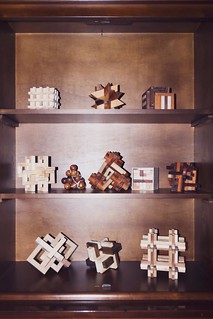 Meet the Millers, George and Roxanne, proprietors of the world’s largest collection of mechanical puzzles: physical objects that a puzzler holds and manipulates while seeking a solution. In total, the Miller collection — an accumulation of collections, and collections of collections — amounts to more than 80,000 puzzles. It comprises some five thousand Rubik’s Cubes, including a 2-by-2-by-2 rendering of Darth Vader’s head. And there are more than 7,000 wooden burr puzzles, such as the interlocking, polyhedral creations by Stewart Coffin, a Massachusetts puzzle maker; they evoke a hybrid of a pine cone and a snowflake and are Mr. Miller’s favorites. Mrs. Miller is fond of their 140 brass, bronze and gold puzzle sculptures by the Spanish artist Miguel Berrocal; Goliath, a male torso in 79 pieces, is “a puzzle that all puzzlers lust after,” she said.
Meet the Millers, George and Roxanne, proprietors of the world’s largest collection of mechanical puzzles: physical objects that a puzzler holds and manipulates while seeking a solution. In total, the Miller collection — an accumulation of collections, and collections of collections — amounts to more than 80,000 puzzles. It comprises some five thousand Rubik’s Cubes, including a 2-by-2-by-2 rendering of Darth Vader’s head. And there are more than 7,000 wooden burr puzzles, such as the interlocking, polyhedral creations by Stewart Coffin, a Massachusetts puzzle maker; they evoke a hybrid of a pine cone and a snowflake and are Mr. Miller’s favorites. Mrs. Miller is fond of their 140 brass, bronze and gold puzzle sculptures by the Spanish artist Miguel Berrocal; Goliath, a male torso in 79 pieces, is “a puzzle that all puzzlers lust after,” she said.
Until recently, the Miller collection resided at Puzzle Palace in Boca Raton, Fla., filling their mansion and a museum (a smaller house) next door. Puzzles occupied even the bathrooms. Then last year, on a whim, the Millers bought a 15th-century, 52-room castle in Panicale, a hamlet in central Italy. They packed their puzzle collection into five 40-foot shipping containers and, for their own transit, booked a cruise from Miami to Rome.
LOOSE CHANGE: DECEMBER 31, 2023
Here are some additional items in the media this week that may be of interest. -Editor
Numismatic News published a review by Mike Thorne of the 6th Edition of Volume II of the Cherrypickers' Guide. Here's an excerpt - see the complete article online. -Editor
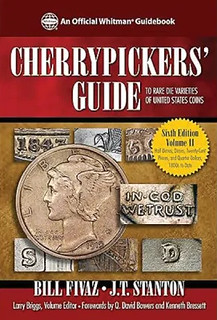 Well, it’s finally here: the 6th edition of Volume II of the Cherrypickers’ Guide. But is it what cherrypickers have been waiting for? Or is it something else, something that presages a third volume?
Well, it’s finally here: the 6th edition of Volume II of the Cherrypickers’ Guide. But is it what cherrypickers have been waiting for? Or is it something else, something that presages a third volume?
Unfortunately, I think it’s the latter. Don’t misunderstand me: I don’t mean to imply that there’s anything wrong with the new book. I think it does a great job for the material covered, which is half dimes through quarter dollars. But it really doesn’t replace the 5th edition volume II, which covered half dimes through quarter dollars and also half dollars, silver dollars, gold coins, commemoratives, and bullion.
Because the new edition doesn’t replace its predecessor, the 5th edition volume II is selling for big bucks on Amazon (used at $78.97 and up) and eBay ($125). With that said, what will you find in the new edition?
To read the complete article, see:
Basics and Beyond: Review of Latest ‘Cherrypickers’ Guide’
(https://www.numismaticnews.net/collecting-101/basics-and-beyond-review-of-latest-cherrypickers-guide)
To read earlier E-Sylum articles, see:
CHERRYPICKERS' GUIDE, 6TH EDITION, VOLUME II
(https://www.coinbooks.org/v26/esylum_v26n23a06.html)
CHERRYPICKERS' GUIDE SECOND PRINT RUN
(https://www.coinbooks.org/v26/esylum_v26n37a08.html)
Other topics this week include Wheat Cents, and Australia's new King Charles III coins. -Editor
THE TANGBUNIA BANK OF VANUATU
Much as I hate clickbait headlines, I couldn't resist "Inside The World's Weirdest Bank." From the India Times. Found via News & Notes from the Society of Paper Money Collectors (Volume IX, Number 27, December 19, 2023). -Editor
In whichever country you reside, the first thing that comes to mind when we hear the word 'banks,' is dealing with money through currency, right? Be it the country’s domestic and/or foreign currency. But can you imagine a bank that does not deal with currencies?
Well, there indeed is an unusual bank that is said to be the world’s weirdest one since it doesn’t deal with the usual currencies. It is the Tangbunia Bank on Pentecost Island in the South Pacific nation of Vanuatu. It uses the native currency of boar tusks instead of Western-style money.


